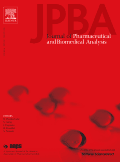
Metabolomics
Scope & Guideline
Shaping the Future of Endocrinology and Metabolism
Introduction
Aims and Scopes
- Metabolomic Profiling:
The journal emphasizes comprehensive metabolomic profiling using various analytical techniques such as LC-MS, GC-MS, and NMR to identify and quantify metabolites in biological samples. - Application in Disease Research:
Research published in 'Metabolomics' often focuses on the application of metabolomic techniques in understanding disease mechanisms, identifying biomarkers, and exploring therapeutic interventions across a range of conditions including cancer, metabolic syndromes, and infectious diseases. - Methodological Innovations:
The journal supports the development of novel methodologies and bioinformatics tools for metabolomics, enhancing data analysis, metabolite identification, and integration with other omics technologies. - Environmental and Agricultural Metabolomics:
There is a growing interest in applying metabolomics to environmental science and agriculture, studying the effects of environmental changes on metabolic profiles in plants and animals. - Interdisciplinary Approaches:
The journal promotes interdisciplinary research that combines metabolomics with genomics, proteomics, and other fields to provide a holistic understanding of biological processes.
Trending and Emerging
- Machine Learning and Data Integration:
The integration of machine learning techniques with metabolomics for predictive modeling and data analysis is rapidly gaining traction, facilitating the discovery of complex patterns in metabolomic data. - Metabolomics in Personalized Medicine:
There is a growing focus on the application of metabolomics in personalized medicine, particularly in tailoring treatments based on individual metabolic profiles, especially in chronic diseases such as diabetes and cancer. - Impact of Lifestyle and Nutrition:
Research exploring the effects of diet, exercise, and lifestyle on the metabolome is trending, reflecting a broader interest in how these factors influence health and disease. - Environmental Metabolomics:
Emerging studies are increasingly addressing the impact of environmental stressors on metabolic profiles in both humans and ecological systems, highlighting the relevance of metabolomics in environmental health. - Multi-Omics Integration:
The trend towards integrating metabolomics with other omics technologies (genomics, proteomics) is on the rise, enabling a more comprehensive understanding of biological systems and disease mechanisms.
Declining or Waning
- Basic Metabolite Characterization:
Research that solely focuses on the basic characterization of metabolites without linking them to biological functions or disease relevance has become less frequent, as the field moves towards more integrative approaches. - Single-Matrix Studies:
There has been a noticeable decline in studies that analyze metabolites from a single biological matrix (e.g., only serum or urine) without considering multi-matrix approaches that provide a more comprehensive understanding of metabolism. - Overly Technical Method Papers:
Although methodological papers remain important, there appears to be a waning interest in publications that are highly technical and lack practical applications or biological insights, as researchers seek more translational outcomes.
Similar Journals

Mass Spectrometry Letters
Pioneering Insights in Biochemistry and Spectroscopy.Mass Spectrometry Letters is a pioneering open-access journal published by the Korean Society for Mass Spectrometry, specializing in the diverse fields of analytical chemistry, biochemistry, and spectroscopy. Established in 2010, this journal aims to disseminate groundbreaking research and advancements in mass spectrometry and its applications across various scientific domains. Though currently categorized in the Q4 quartile in key analytical fields, Mass Spectrometry Letters serves as an essential platform for researchers, professionals, and students to share innovative methodologies, emerging trends, and practical applications of mass spectrometry, thus fostering collaboration and advancing knowledge in the scientific community. With a commitment to open access, articles published since 2010 are readily available, enabling widespread distribution and engagement within the international research community. Located in Daejeon, South Korea, and actively converging research through 2024, the journal holds the potential to grow its impact and relevance within the dynamic landscape of mass spectrometry.

Cancer Informatics
Advancing Oncology Research with Data-Driven ApproachesCancer Informatics, published by SAGE PUBLICATIONS LTD, is a leading open-access journal dedicated to the integration of computational techniques and cancer research. Since its inception in 2005, this journal has become a vital resource for researchers, professionals, and students interested in the intersection of informatics and oncology. With an E-ISSN of 1176-9351 and a focus on the innovative application of data analysis in cancer research, Cancer Informatics serves to disseminate critical findings that aid in understanding cancer biology and enhancing treatment modalities. Recognized in the Q3 category for both Cancer Research and Oncology according to the 2023 metrics, it currently holds a Scopus ranking of #246 in Medicine _ Oncology and #172 in Biochemistry, Genetics and Molecular Biology _ Cancer Research, indicating its contribution to ongoing research in these fields. This journal not only supports open access to scientific findings but also aims to foster collaboration among interdisciplinary scholars worldwide, making it an essential platform for advancing the field of cancer informatics through cutting-edge research and innovative methodologies.

Welcome to Immuno, a pioneering open-access journal published by MDPI that serves as a key platform for the dissemination of innovative research in the fields of immunology, biochemistry, and genetics. Established in 2021, this journal has rapidly established itself within the academic community, currently ranking in the 53rd percentile in Medicine (miscellaneous) and 50th percentile in Biochemistry, Genetics, and Molecular Biology according to Scopus metrics. With a commitment to advancing our understanding of immune mechanisms and their applications in health and disease, Immuno is dedicated to publishing high-quality peer-reviewed articles that contribute valuable insights to both researchers and practitioners. Positioned in the heart of Switzerland, its global accessibility and diverse editorial board are a testament to its aim to promote knowledge exchange among scientists, practitioners, and students alike. Explore the latest discoveries and advancements in immunological research through Immuno, where your contributions help shape the future of this critical area of study.

Current Proteomics
Navigating the Evolving Landscape of ProteomicsCurrent Proteomics is a distinguished journal dedicated to the dynamic field of proteomics, offering researchers and professionals a platform to disseminate innovative findings and comprehensive reviews. Published by Bentham Science Publishers Ltd, this journal caters to a global audience and serves as an essential resource for students, academics, and industry experts interested in advances in biochemistry and molecular biology. With an ISSN of 1570-1646 and an E-ISSN of 1875-6247, the journal has established itself in various research categories, achieving a Q4 ranking in both Biochemistry and Molecular Biology as of 2023. While the impact factor and H-index data are not specified, its Scopus ranking reflects a competitive position in its fields, with percentiles in the 12th to 16th range. Although not an open-access journal, Current Proteomics is vital for fostering ongoing dialogue and collaboration in proteomic research, encouraging contributions that explore cutting-edge methodologies and applications. Researchers are invited to share their insights and contribute to this evolving discipline, thus enhancing the collective understanding of proteomics within the scientific community.

Metabolic Engineering Communications
Exploring the pathways of health through metabolic engineering.Metabolic Engineering Communications is a preeminent academic journal dedicated to advancing the field of metabolic engineering, publishing high-quality research that integrates biomedical engineering with metabolic processes. Launched in 2014 by Elsevier, this Open Access journal ensures that cutting-edge discoveries are accessible to a global audience, fostering collaboration and innovation across disciplines. With a notable impact factor and ranking in the Q1 category for both Biomedical Engineering and Endocrinology, Diabetes, and Metabolism, it stands as a pivotal resource for researchers, professionals, and students seeking to enhance their understanding of metabolic pathways and their implications in health and disease. The journal's mission is to disseminate transformative research that sparks discussion and stimulates further exploration in this critical area of study. With its commitment to rigorous peer review and high visibility, Metabolic Engineering Communications is an essential platform for those at the forefront of metabolic research.

BIOCHIMICA ET BIOPHYSICA ACTA-MOLECULAR BASIS OF DISEASE
Exploring the Foundations of Health and DiseaseBIOCHIMICA ET BIOPHYSICA ACTA-MOLECULAR BASIS OF DISEASE, published by Elsevier, is a pivotal journal in the fields of Molecular Biology and Molecular Medicine, recognized for its high impact factor and robust ranking within Scopus categories, holding prestigious quartiles in Q1 for both disciplines as of 2023. With ISSN 0925-4439 and E-ISSN 1879-260X, this journal fosters cutting-edge research from 1990 to 2025, addressing the critical molecular mechanisms underlying human diseases. Its wide-ranging scope includes original research articles, reviews, and advanced theoretical insights, serving as an essential resource for researchers, clinicians, and students alike. The journal is based in the Netherlands, at RADARWEG 29, 1043 NX AMSTERDAM, and while it does not currently offer an open-access option, it continues to maintain a strong presence in the scientific community, enhancing our understanding of molecular processes in health and disease.

Journal of Pharmaceutical and Biomedical Analysis
Transforming analytical techniques into biomedical breakthroughs.The Journal of Pharmaceutical and Biomedical Analysis, published by ELSEVIER and available in print and online formats, stands as a pivotal source of knowledge in the realms of Analytical Chemistry, Clinical Biochemistry, Drug Discovery, and Pharmaceutical Science. With an ISSN of 0731-7085 and an e-ISSN of 1873-264X, this journal is dedicated to publishing high-quality research that advances the understanding and development of analytical techniques in pharmaceuticals and biomedicine. The journal has earned a solid reputation, reflected in its Q2 category rankings across five distinct fields for 2023, and boasts impressive Scopus rankings, signaling its robust impact within the academic community. The Journal of Pharmaceutical and Biomedical Analysis serves as an essential resource for researchers, professionals, and students alike, providing actionable insights and fostering innovation that can directly influence future advancements in drug development and biomedical applications.

LIPIDS
Innovating understanding of lipids in health and disease.LIPIDS is a renowned peer-reviewed journal published by Wiley, dedicated to the field of lipid research, encompassing biochemistry, molecular biology, and organic chemistry. With its roots dating back to 1966 and a commitment to advancing knowledge until 2024, this journal serves as a vital platform for sharing significant findings in lipid biochemistry and its applications in health and disease. Although it currently does not offer Open Access options, it maintains a respectable standing with a Q3 ranking in Biochemistry and Organic Chemistry, and a Q4 ranking in Cell Biology based on the 2023 category quartiles. Additionally, its Scopus rankings reflect a solid position within the organic chemistry and biochemistry subfields. Published from Germany, LIPIDS caters to researchers, professionals, and students eager to explore the roles of lipids in biological processes and innovatory applications in various scientific disciplines.

Journal of Biochemistry
Your essential resource for biochemical advancements.Journal of Biochemistry, published by Oxford University Press, is a prestigious academic journal that has been at the forefront of biochemical research since its inception in 1922. With an ISSN of 0021-924X and an E-ISSN of 1756-2651, this journal serves as a platform for disseminating high-quality research in the fields of biochemistry, molecular biology, and medicine, holding impressive rankings such as Q2 in Biochemistry and Medicine (miscellaneous) in 2023. As of 2024, the journal continues to explore significant topics in these areas, offering valuable insights for researchers, professionals, and students alike. The journal does not currently offer open access, but it remains a vital resource for anyone in the biochemical community seeking to stay updated on the latest discoveries and advancements. With its rich history and dedication to scientific excellence, the Journal of Biochemistry is an indispensable part of the scholarly landscape.

Physiology and Pharmacology
Disseminating high-quality research for a healthier future.Physiology and Pharmacology is a distinguished open access journal that has been disseminating high-quality research in the fields of physiology and pharmacology since its inception in 1997. Published by the Iranian Society of Physiology & Pharmacology, this journal offers a platform for scholars and practitioners to share innovative findings and advancements that contribute to the understanding of biological systems and drug action. With its ISSN 2476-5236 and E-ISSN 2476-5244, it ensures global reach and accessibility. The journal is positioned in the third quartile for Linguistics and Language and fourth quartile in both Pharmacology and Physiology categories according to Scopus rankings, reflecting a commitment to expanding knowledge within these interdisciplinary domains. Set within the academic landscape of Iran, the journal aims to bridge regional research with the international community, providing valuable insights into physiological processes and pharmacological developments. In light of its open access model, the Physiology and Pharmacology journal plays a crucial role in enhancing the visibility of research outcomes and fostering collaboration among researchers, professionals, and students on a global scale.